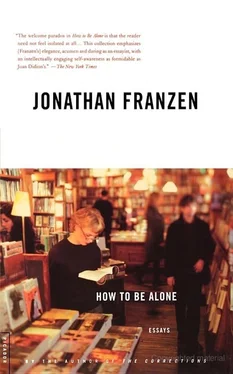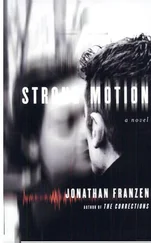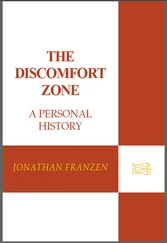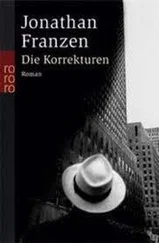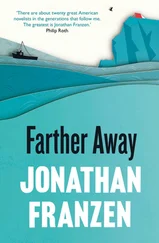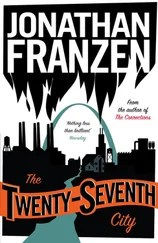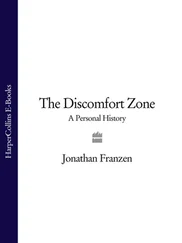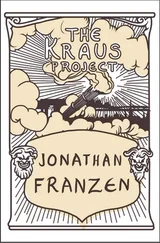Most North American metropolises are wildly centrifugal, however, and the contrast between our lifeless inner grids and Europe’s thriving centers has prompted the architect and essayist Witold Rybczynski to ask, “Why aren’t our cities like that?” In his recent book, City Life , he sets out to examine “urban expectations” in the New World. Although he devotes much of the book to explaining the different look of our cities, Rybczynski understands that “like that” means something deeper: an urban vitality, an at-homeness with the idea of living in cities. Washington, D.C., has Parisian-style diagonal boulevards, height uniformity, and monumental architecture, and yet no one would mistake the feel of a residential D.C. street at ten in the evening for the Fourteenth Arrondissement. Nor is there any mistaking our country’s current mood of hostility toward cities. Upstate New York has taken revenge on Gotham in the person of George Pataki; planned cuts in Medicare, welfare, and other federal programs target city centers like ICBMs; and the groups that the Western and suburban Republicans now ascendant in Congress have identified as flies in the ointment — poor people, gay people, liberal elites, rap musicians, NEA-sponsored performance artists, government bureaucrats — all happen to be concentrated in big cities.
City Life traces the provenance of this hostility. Paying a visit to Williamsburg, Virginia, Rybczynski reports being struck not “by its strenuous ‘historical’ character. . but rather by how familiar it seemed.” Williamsburg is the prototype of the American small town, distinctive not only in its “spatial liberality” but in its relation to nature. European towns were traditionally enclosed by walls of stone and walls of class; membership in the bourgeoisie (literally, “town dwellers”) brought various jealously guarded privileges. American towns were open from the start. Surrounded by wilderness, Rybczynski says, “town builders reacted not by emphasizing the contrast between the natural and the man-made, but by incorporating natural elements in the town as much as possible, whether as green squares, tree-lined streets, or ample gardens.” That the colonial town became specifically “a celebration of the house,” however, resulted from the accident of North America’s being settled by the English and Dutch, whose wealthier citizens, unlike their counterparts in other European countries, had a marked preference for individual home ownership. In America, even people of modest means could afford private ownership, and land was so plentiful that each house could have a private yard. Nor was the deconcentration of society simply spatial. Rybczynski discerns in our earliest history “a startling tendency toward a far-flung homogeneity,” and he relates how Alexis de Tocqueville, scouring the backwoods for an American peasantry in the 1830s, instead found a settler who had books and newspapers and spoke “the language of towns.” With the rule-proving exception of African slaves and Native Americans, there was no peasantry above the Rio Grande, and the result of this disjunction between the rural and the rustic was distinctively American: urbanity without urbanness.
In Rybczynski’s telling of it, the first century and a half of postcolonial American history was essentially a detour in the inevitable fulfillment of these proto-suburban ideals. Quaker practicality and a profusion of immigrants ensured that Philadelphia, for example, which William Penn had laid out as a “green country town,” quickly saw its spacious grid parceled up by speculators and bricked up with row houses. It was Penn’s grid, not his green vision, that became the norm for big American cities. In the absence of a belief in cities as unique repositories of culture, moreover, there was little to prevent American cities from becoming purely commercial enterprises. However much the country’s urban gentry came to hunger for European refinements, attempts at making cities more “like Paris”—Daniel Burnham’s plan for a horizontal Chicago of parks and boulevards is perhaps the most famous — soon foundered on the economics of skyscrapers or sank beneath waves of immigration. As Rybczynski puts it, “the city profitable replaced the city beautiful.”
Yet the city profitable worked. The first decades of this century were the heyday of urban life in America. I generally resist wishing I’d lived in an earlier era (I always imagine myself dying of some disease whose cure was just around the corner), but I make an exception for those years when the country’s heart was in its cities, the years of Lou Gehrig and Harold Ross, Automats and skyscrapers, trolley cars, fedoras, and crowded train stations. I make this exception precisely because the era seems so anomalous, so extraneous to the continuum connecting Williamsburg colonials and Tocqueville’s urbane woodsmen to the far-flung tract-housing dwellers of today. It seems like a time when the country could have turned in a less wasteful, more public-spirited, more European direction.
Ironically, these decades were a time, perhaps the only time, when European cities were looking westward for inspiration. If there’s a villain in City Life , it’s Le Corbusier, who, with what Rybczynski calls “a Warholian gift for self-promotion,” toured the world publicizing his vision of the Radiant City of the future. City Life offers a nice contrast between the heroic descriptive work of the nineteenth-century Tocqueville and the malignant fatuity of the twentieth-century Le Corbusier, whose vision was prescriptive: superskyscrapers surrounded by grass and superhighways; a Cartesian separation of work from play, of housing from commerce. When Le Corbusier proposed razing six hundred acres of central Paris, he was ignored by everyone but his fellow French intellectuals. In America, however, his ideas influenced a generation of city planners and eventually inspired hundreds of urban “renewal” projects. In Manhattan we still live with the radiance of NYU’s dorms and East Harlem’s projects.
Radiant City planning, whose wrongheadedness is old news now, by no means killed the American inner city singlehanded. Kenneth T. Jackson concluded his study of American suburbanization, Crabgrass Frontier , with an excellent analysis of the “residential deconcentration” of America. Jackson pinned the unique degree of American suburbanization on two fundamental causes: racial prejudice and inexpensive housing. Suburbs provide uneasy whites with a safe haven, and a variety of factors — high per capita wealth, cheap land and transportation, government subsidies and tax breaks — have made flight affordable to the great middle class.
The most salient contemporary American urban expectations, therefore, are that core cities will be poor and non-white, and that the suburbs will be soothingly homogeneous. Rybczynski is strangely oblivious to these particular expectations. In City Life’s final chapter, “The Best of Both Worlds,” he celebrates the Philadelphia community of Chestnut Hill, which became a middle-class haven in the first decades of this century, when a local millionaire named George Woodward and his father-in-law built several hundred beautiful rental houses of Wissahickon schist. With medium population density, a parklike ambience, and carefully planned architecture, the Woodward development showed the influence of the Hampstead Garden Suburb, a model development begun outside London in 1906. In The Death and Life of Great American Cities , Jane Jacobs observed that garden suburbs, since they have neither the street life of real cities nor the privacy of real suburbs, succeed only if their residents are homogeneous and relatively affluent. Rybczynski, who now owns a house in Chestnut Hill, contradicts Jacobs by asserting that the community “has become more socially and economically heterogeneous.” He extols it as “a small town and a city both,” “an only slightly urbanized Arcadia” whose central shopping street, Germantown Avenue, is “precisely the sort of old-fashioned pedestrian district people find so attractive.” He speaks of the “long” waiting list for Woodward house rentals.
Читать дальше
Конец ознакомительного отрывка
Купить книгу
